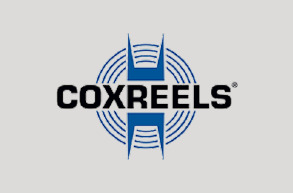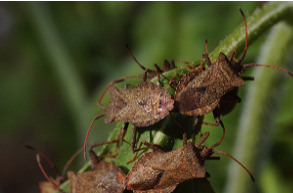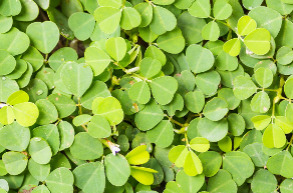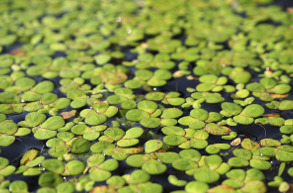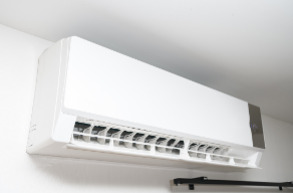Mosquito Hawk Control
Most Effective Products
Mosquito Hawk Control: How To Get Rid of Mosquito Hawks (Crane Flies)
This page is a Mosquito Hawk control guide. By using the products and methods suggested, you will get rid of Mosquito Hawks (Crane Flies). Follow this guide and use the recommended products, and we guarantee 100% control of Mosquito Hawks.
If you are noticing brown patches in your grass, you might have a Mosquito Hawk infestation. The Mosquito Hawk, also commonly known as a Crane Fly, looks similar to a mosquito, except it is much larger with longer legs. If left alone, this insect can cause noticeable damage to your lawn.
Although they might have an intimidating look, Mosquito Hawks are harmless as adults. It is the Mosquito Hawk larvae that can be a problem by causing damage to vegetation. The larvae have the appearance of white or brown worms and are known to eat roots and stems.
Our professional DIY treatment guide can help you to get rid of a Mosquito Hawk infestation with ease.
Identification
Before carrying out a treatment program, you need to make sure that you properly identify the pest to be a Mosquito Hawk or Crane Fly. Misidentification can lead to using the wrong pesticides and not getting the desired result in eliminating the pest.
Mosquito Hawk (Crane Flies) vs Mosquitoes
Most people mistake Mosquito Hawks for Mosquitoes because they both have delicate bodies and long, thin legs. However, the Mosquito Hawk is much bigger; it will typically grow to be about 2 inches long, while a mosquito will only grow to about a quarter of an inch long.
What Do Mosquito Hawks (Crane Flies) Eat?
Another distinction is their feeding habits. Mosquito Hawk larvae feed on plants and adults lack piercing mouthparts while the mosquito feeds on blood and has piercing mouthparts.
Identifying Mosquito Hawk (Crane Fly) Larvae
Mosquito Hawk control is largely focused upon targeting the larvae which resemble tiny worms that may be green, white, or brown in color. They are often called leatherjackets and have extremely tough skin. They mainly hide in the soil unless it is a warm night. Mosquito Hawk larvae eat decaying matter, roots, and turf and are active during the spring and fall months.
Mosquito Hawk (Crane Fly) Lifespan
The total lifespan of a Mosquito Hawk is about a year. Once an adult Mosquito Hawk lays an egg, it takes 1 to 2 weeks for it to hatch out the Mosquito Hawk larvae. The larvae then feeds on plant roots, leaves, and other debris wherever they have hatched for several months until they go through four molting phases.
The Mosquito Hawk then pupates anywhere between a week to a few months before emerging as an adult. The adult Mosquito Hawk then lives a short time; between 10 to 15 days long, giving them just enough time to lay eggs before they die.
Inspection
The next step in the control process is inspection. Inspecting the property for Mosquito Hawk activity is important because this will ensure a more targeted application, and will prevent you from focusing product applications in the right place.

Where to Inspect
Mosquito Hawks are most active in spring and fall, and will lay their eggs in moist soil, so you will want to check around areas that tend to experience high levels of moisture. Scan the property, keeping an eye out for high-moisture areas, such as mulch beds, flower beds, near lawn fountains, or around the structure where faucets and other plumbing may drip or leak. Take note of these leaky or high-moisture areas, as they will need to be addressed in order to prevent re-infestations.
What to Look For
During your inspection, you are looking for both Mosquito Hawk larvae and the presence of adults. Scan your yard, paying close attention to patches of discolored or dead grass. Inspect the soil in search of larvae by cutting a square foot section of your lawn. It is best to search the soil near the edge in search of healthy grass to feed on.
Thoroughly check the sod and soil of the selected piece. If you can see crane fly larvae, you need to begin treatment as soon as possible. Keep an eye out for the Crane Fly adults to find where they lay their eggs.
Treatment
Once you have completed your inspection and know the areas that need to be treated, you can begin the process of controlling Mosquito Hawks (Crane Flies). Make sure before mixing or handling any chemicals that you have on the proper PPE in the form of gloves, protective eyewear and a safety mask.
For effective Mosquito Hawk control, use a combination of Reclaim I/T, Bifen LP and Martin's IG Regulator. All three pesticides will work together to target adult and larvae Crane Flies.
If you are looking for crane fly prevention, it is important to note that Reclaim I/T should only be used from August to February. If Reclaim I/T is applied at any time before or after this, it will only suppress the presence of Mosquito Hawks rather than control them.
Step 1 - Apply Bifen LP Granules to Lawn
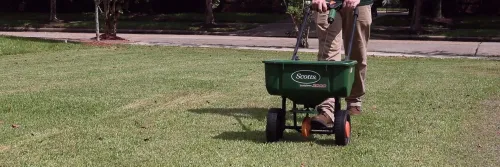
Bifen LP is granular insecticide that is labeled to control many turf pests, including Mosquito Hawk Larvae. Start by first calculating the square footage of your lawn or treatment area. Do this by measuring your lawn's length and width in feet, and then multiplying them together (length x width = square footage).
To treat for Mosquito Hawk larvae in your lawn, apply Bifen LP granules at a rate of 4.6 pounds per 1,000 square feet. We recommend using a push broadcast spreader to apply the granules, similar to applying fertilizer. For smaller patches of lawn, you can also use a hand spreader.
Load your spreader with the proper amount of Bifen granules based on your square footage. Broadcast the half the granules in parallel lines once across the area and then at a perpendicular angle (like a grid pattern) the second time around so that the granules are evenly distributed over your entire lawn.
Once Bifen LP has been applied, it should be activated by water or a liquid concentrate. This will be done with the Reclaim IT and Martin's IG Regulator mixture in the next step.
Step 2 -Measure and Mix Reclaim I/T and Martin's I.G. Regulator

Reclaim I/T is a liquid concentrate that is labeled to not only control Mosquito Hawks, but over 70 different insect pests. It is also a repellent, so it will create a deadly and preventative solution. Because the Crane Fly larvae cause the most damage to your vegetation, you will mix in Martin's IG Regulator with your Reclaim I/T Mixture.
Martin's IG Regulator is an insect growth regulator (IGR), which will disrupt the life cycle of nuisance flies and other common pests. Any Mosquito Hawk larvae that come into contact with this IGR will not be able to develop into adults. Using an IGR with an adulticide like Reclaim I/T can give you faster and more effective control because you are targeting every stage of the pest's life cycle.
First, determine how much product you need by measuring the square footage of your treatment area or lawn. This can be done by measuring the width and length of your lawn, and then multiplying those numbers together (length x width = square feet.)
You will mix both products together in sprayer to create a single finished solution. For Mosquito Hawk control, you will mix Reclaim I/T with water at a rate of 0.75 ounces per 1,500 square feet. You will then add Martin's I.G. Regulator at a rate of 1 ounce per 1,500 square feet. We recommend using a 20-gallon hose-end sprayer to make broad applications throughout the entire lawn.
To use the hose-end sprayer, remove the reservoir from the nozzle then make sure the control valve and water pump are turned off, then attach the nozzle to the hose. Add the appropriate amount of Reclaim I/T and IG Regulator then fill the reservoir with enough water to treat the entire lawn. Plan on using 2 gallons of water per 1,000 sq. ft. to thoroughly coat the area.
Step 3 - Apply Mixed Solution

Reattach the reservoir to the nozzle with the water pump and valve still in the OFF position and then turn the water on. To spray, push forward on the control valve. Evenly distribute the mixture over your entire lawn, keeping track of how much product is left in the reservoir during the application.
Use a fan-tip spray setting to ensure even coverage and spray at a steady pace, moving from the back of the turf area to the front. Make sure to apply on calm days when wind speeds are low to minimize drift.
Prevention
After eliminating Mosquito Hawks (Crane Flies), you will need to take preventative measures with your lawn in order to completely get rid of your crane fly infestation.
Properly maintaining your area is essential to ensure that Mosquito Hawks will not want to be on your lawn anymore. Be sure to keep your lawn healthy by mowing at the appropriate height (3 to 4 inches high), watering less frequently (1 to 1.5 inches once a week), removing lawn thatch, and making sure that your soil is properly aerated with adequate drainage.

Like most common pests, Mosquito Hawks are attracted to light. Switch outdoor light bulbs to bug bulbs that emit yellow light or turn off your outside lights at night to stop them from flying around the area.
Key Takeaways
What are Mosquito Hawks (Crane Flies)?
- Mosquito Hawks (also known as Crane Flies) resemble mosquitoes, but are much larger and have long, thin legs.
- Mosquito Hawks or Crane Flies are common during summer weather where they show up in large numbers.
- Mosquito Hawk or Crane Fly Larvae inflict significant damage on turfgrass, creating patches of discoloration.
How To Get Rid of Crane Flies or Mosquito Hawks
- Use a mixture of Reclaim I/T and Martin's IG Regulator to control a Mosquito Hawk infestation. Mix the products with water in a hose-end sprayer and apply to the affected areas to prevent Mosquito Hawks from returning.
Preventing Mosquito Hawk (Crane Fly) Reinfestation
- Mosquito Hawk infestations can be avoided with proper lawn care and soil aeration. You can also apply preventative applications of Reclaim I/T and Martin's IG Regulator to keep Mosquito Hawks away.




















































